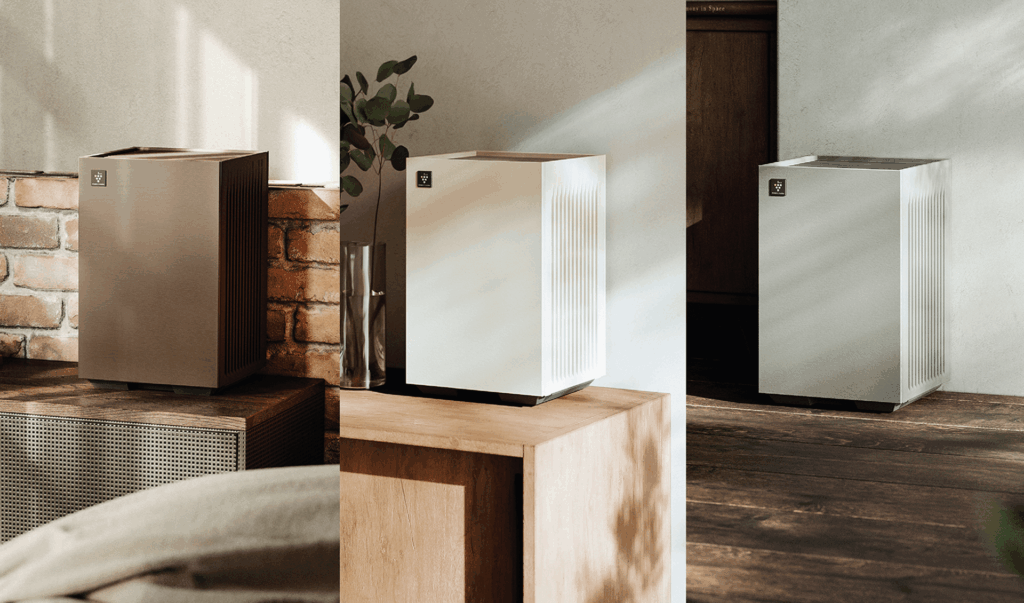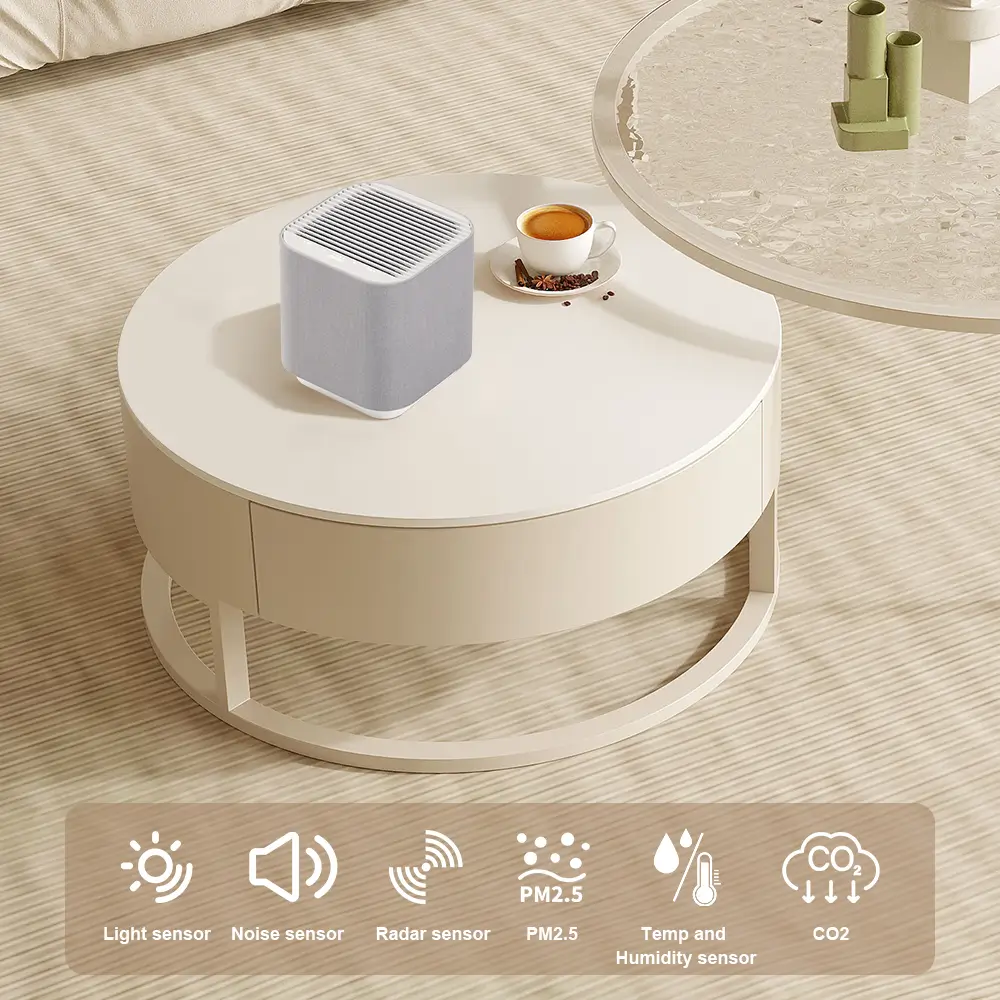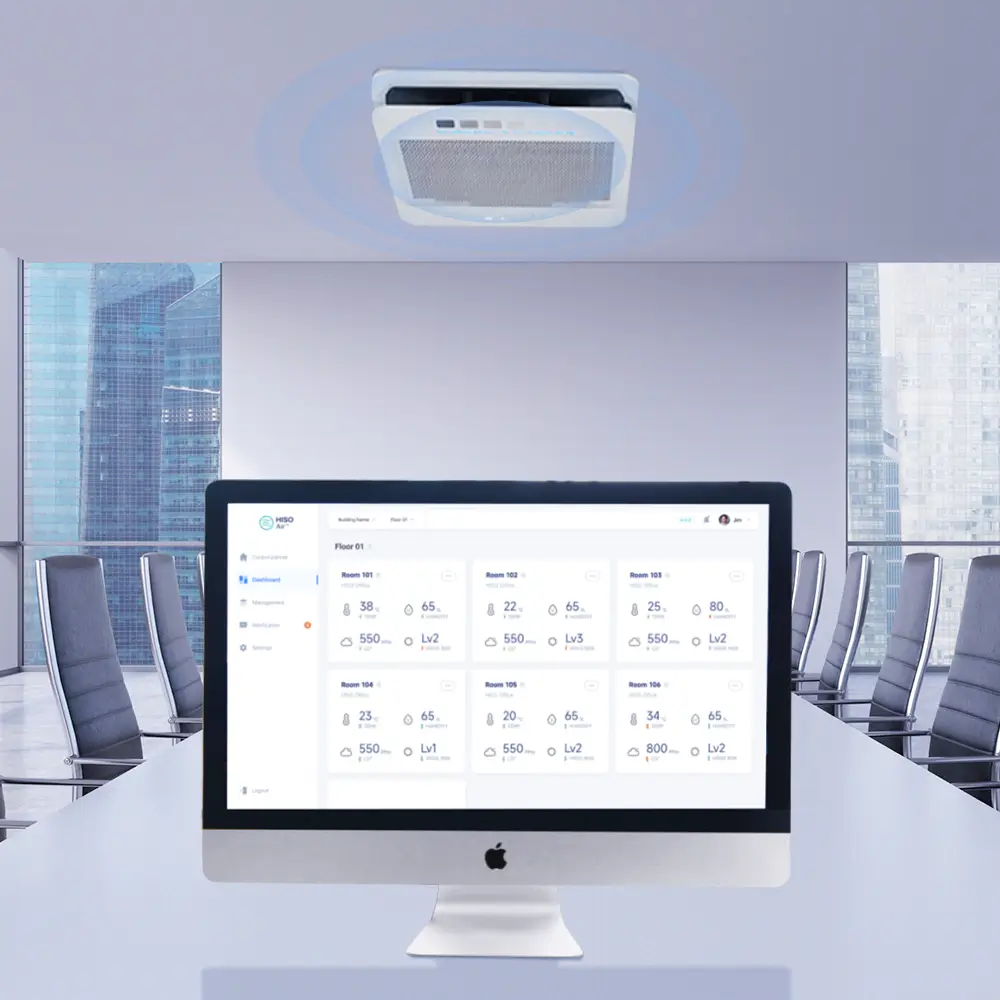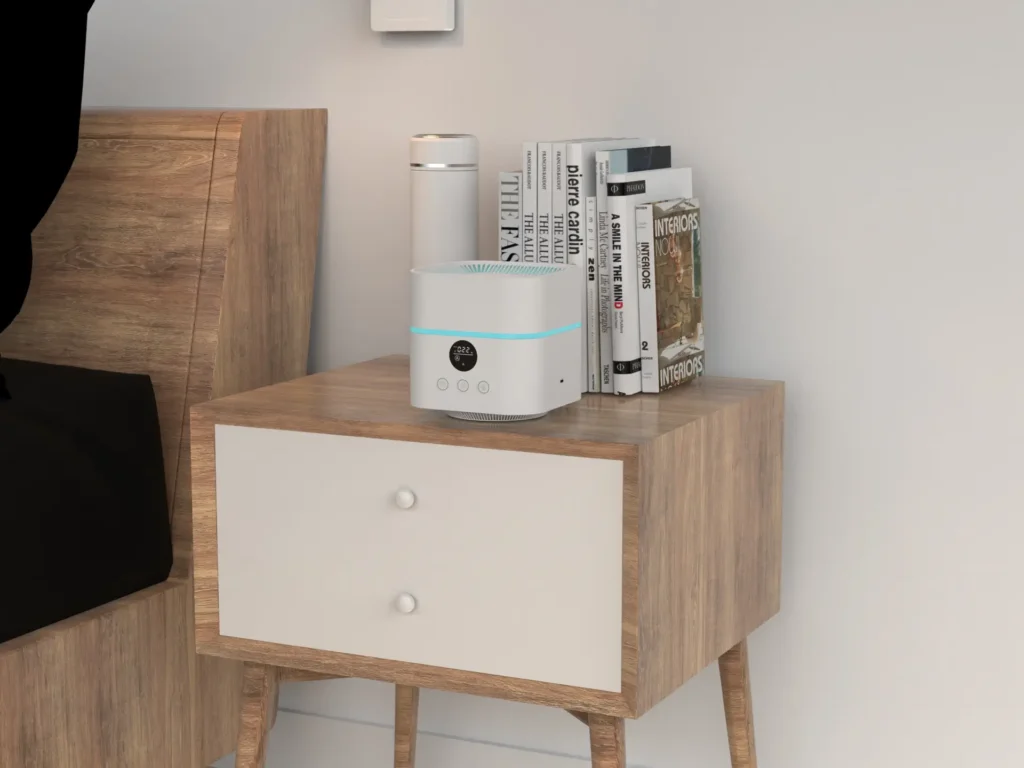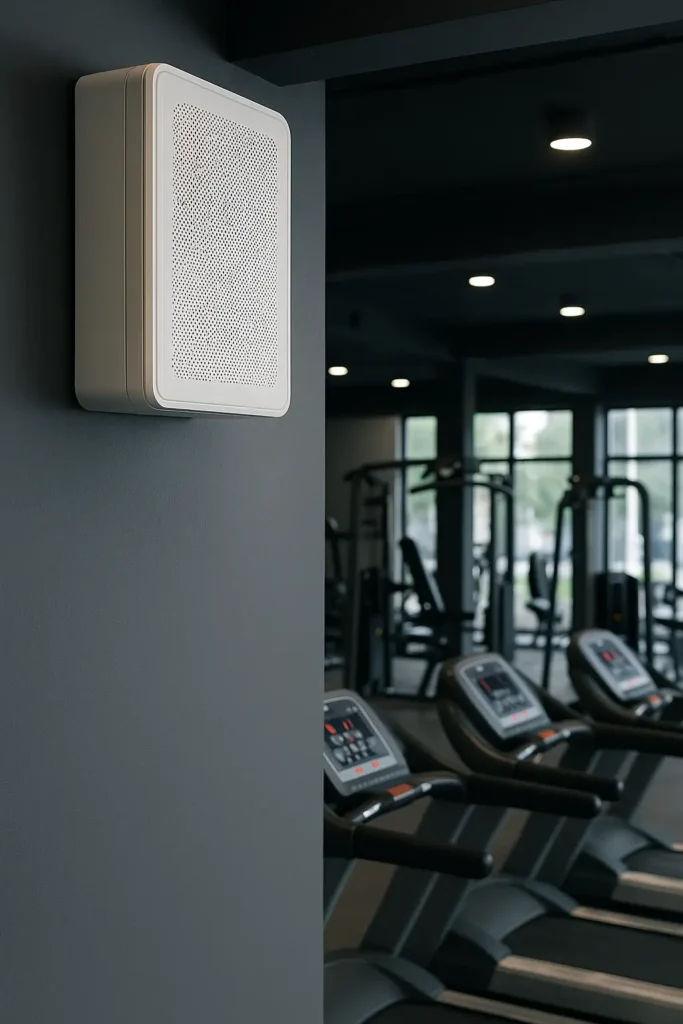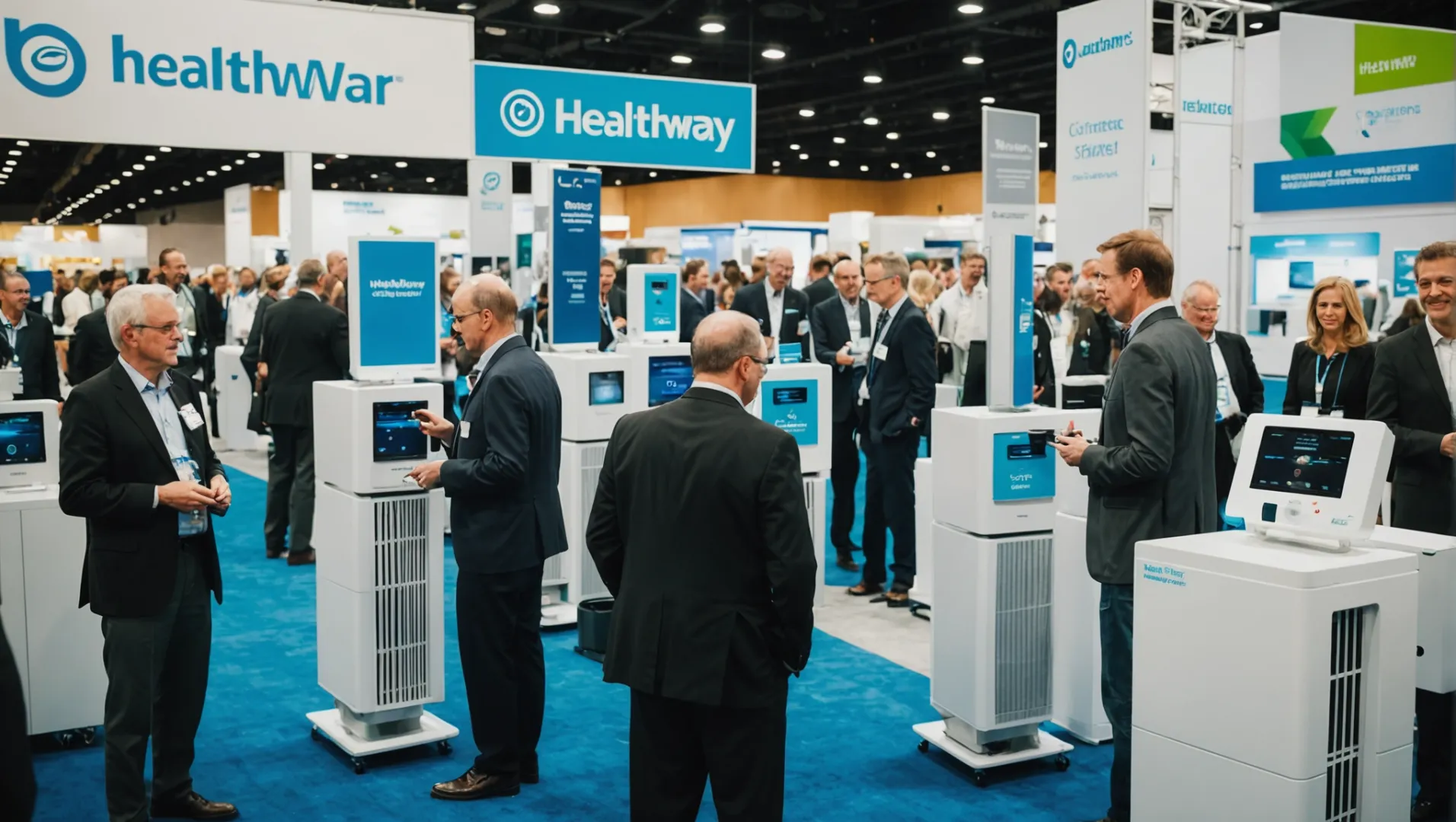
Die Suche nach einem zuverlässigen Hersteller von Luftreinigern in den USA kann sich wie die Suche nach der Nadel im Heuhaufen anfühlen, besonders wenn es darum geht, eine gute Luftqualität zu Hause zu gewährleisten.
Um vertrauenswürdige Hersteller von Luftreinigern in den USA zu finden, sollten Sie sich über Unternehmen wie Healthway und Austin Air informieren. Besuchen Sie Fachmessen wie die AHR und die IHS, auf denen viele Hersteller ihre Produkte vorstellen. Auch wenn die Auswahl begrenzt ist, bieten diese Quellen zuverlässige Lösungen.
Aber keine Sorge! Auch wenn die Landschaft eng erscheinen mag, gibt es doch so viele wertvolle Informationen, die Ihnen auf dem Weg zu sauberer Luft helfen können. Lassen Sie uns einen tieferen Einblick in die Dynamik der US-Luftreinigerherstellung gewinnen.
Healthway und Austin Air sind die einzigen Hersteller in den USA.Falsch
Neben ihnen gibt es noch weitere kleinere Hersteller.
Warum sind Hersteller von Luftreinigern in den USA schwer zu finden?
Trotz steigender Nachfrage sind lokale Hersteller von Luftreinigern in den USA nach wie vor rar und schwer zu finden.
Die Hersteller von Luftreinigern in den USA sind aufgrund der hohen Produktionskosten und der Abhängigkeit von importierten Komponenten, vor allem aus China, eingeschränkt.
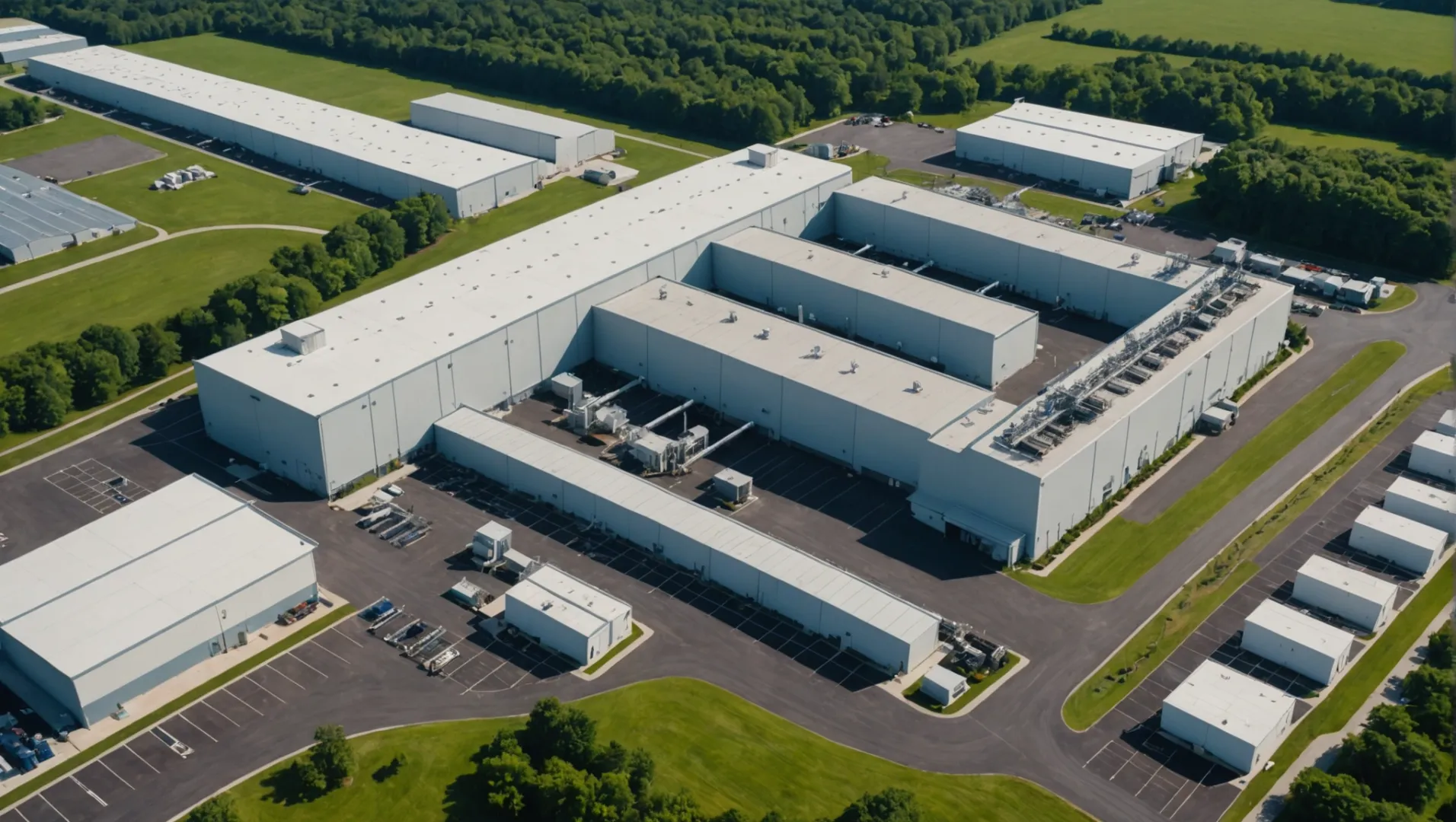
Begrenzte Anzahl von Herstellern
In den Vereinigten Staaten ist die Zahl der Hersteller von Luftreinigern auffallend gering. Hauptakteure wie Healthway und Austin Air dominieren die Landschaft, doch ihre Produkte sind oft von älterer Technologie und höheren Preisen geprägt. Diese Unternehmen richten sich hauptsächlich an gewerbliche Kunden, so dass ihre Angebote für den Durchschnittsverbraucher weniger zugänglich sind.
Abhängigkeit von chinesischen Einfuhren
Die größte Herausforderung für die US-Hersteller ist die Abhängigkeit von importierten Komponenten. Wesentliche Teile wie Lüftersysteme, Filter und Materialien wie Kunststoff und Metall werden überwiegend aus China bezogen. Diese Abhängigkeit treibt nicht nur die Produktionskosten in die Höhe, sondern schränkt auch die Innovation aufgrund logistischer Zwänge und potenzieller Handelshemmnisse ein.
Auswirkungen der Handelspolitiken
Die Handelspolitik hat das Szenario weiter verkompliziert. Die Einführung von Zöllen während der vergangenen Handelsspannungen hat die Kosten und Risiken im Zusammenhang mit dem Import von Komponenten aus China erhöht. Diese Situation kann sich ändern, wenn sich die Politik ändert; sie bleibt jedoch ein erhebliches Hindernis für die Ausweitung der inländischen Produktion.
Die Rolle von Fachmessen
Für diejenigen, die Hersteller mit Sitz in den USA ausfindig machen wollen, sind Messen wie die AHR Expo und die IHS von unschätzbarem Wert. Auf diesen Veranstaltungen wird eine breite Palette von Produkten inländischer und internationaler Hersteller vorgestellt, die eine Plattform für die Entdeckung und Vernetzung mit potenziellen US-Partnern bieten. Die Teilnahme an diesen Veranstaltungen1 könnte Einblicke in die neuesten Markttrends und Möglichkeiten der Zusammenarbeit bieten.
Potenzielle Verschiebungen bei den Fertigungstrends
Es gibt Spekulationen darüber, dass einige chinesische Hersteller aufgrund der sich verändernden Handelsdynamik ihre Produktion in die USA verlagern könnten. Dies könnte dazu führen, dass Luftreiniger aus US-amerikanischer Produktion in Zukunft besser verfügbar und wettbewerbsfähiger werden.
Die Hersteller von Luftreinigern in den USA sind auf importierte Komponenten angewiesen.Wahr
Sie beziehen Teile wie Filter hauptsächlich aus China, was die Kosten in die Höhe treibt.
Die Handelspolitik hat keinen Einfluss auf die Produktion von Luftreinigern in den USA.Falsch
Zölle erhöhen die Kosten und Risiken und erschweren die Einfuhr von Komponenten.
Was macht Healthway und Austin Air so besonders?
Während der Markt für Luftreiniger gesättigt ist, bieten Healthway und Austin Air einzigartige Merkmale, die sie von anderen abheben.
Healthway und Austin Air zeichnen sich durch überlegene Filtertechnologie und ein Engagement für die Herstellung in den USA aus. Obwohl sie einige importierte Komponenten verwenden, stehen Qualität und Langlebigkeit ihrer Produkte im Vordergrund. Ihre Präsenz auf Fachmessen unterstreicht ihren Status als zuverlässige Marken in der Luftreinigerbranche.
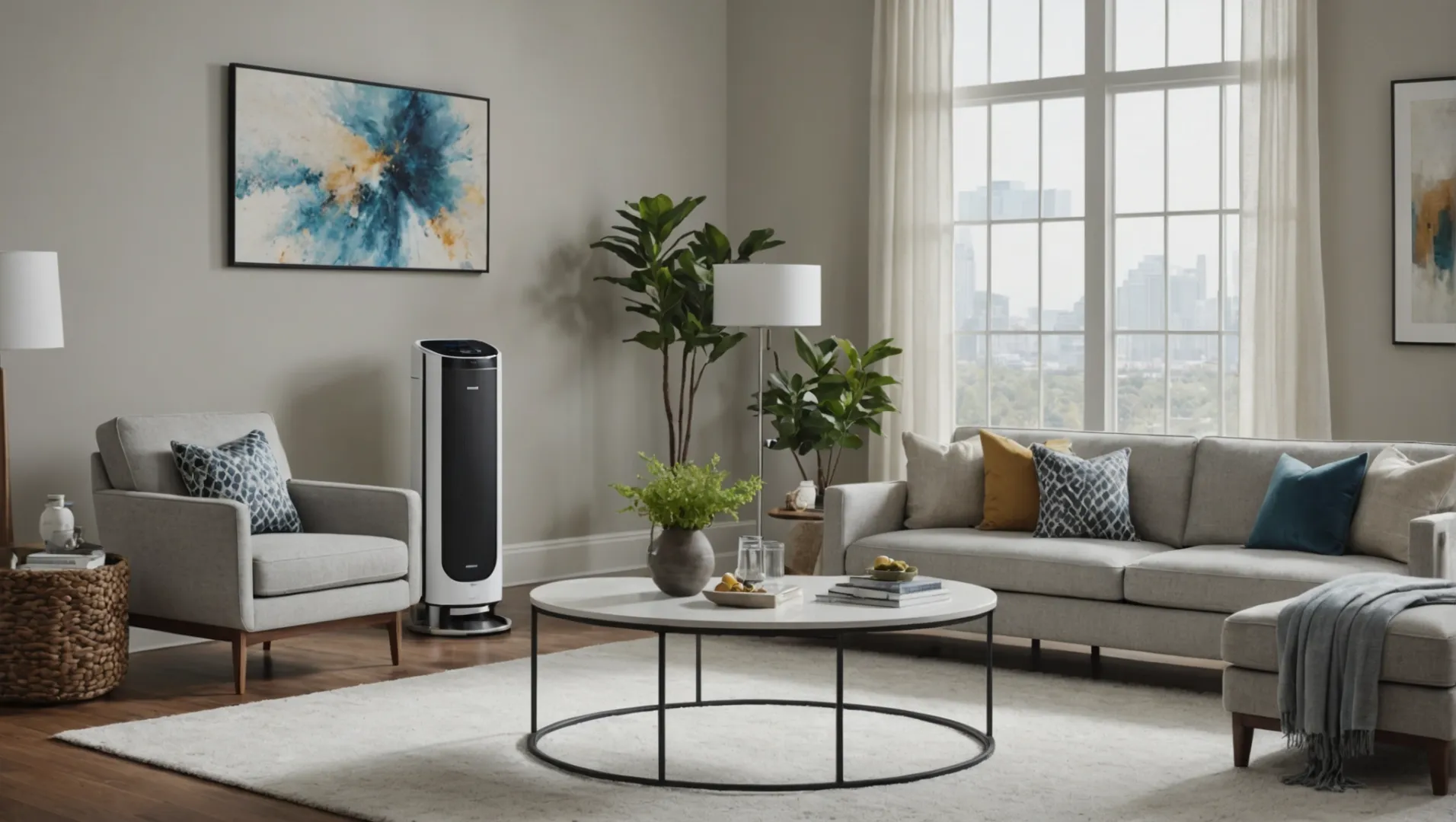
Innovation und Technologie
Healthway und Austin Air sind für ihr Engagement für Innovationen in der Luftreinigungstechnologie bekannt. Healthway2 setzt fortschrittliche Filtersysteme ein, wie z. B. DFS (Disinfecting Filtration System), die ultrafeine Partikel, Bakterien und Viren effektiver abfängt als herkömmliche HEPA Filter. Diese firmeneigene Technologie unterscheidet sie von vielen Konkurrenten, die sich auf Standard-Filtrationsmethoden verlassen.
Austin Air hingegen konzentriert sich auf die Herstellung robuster Geräte mit langlebigen Filtern. Ihre Filter kombinieren medizinische Qualität HEPA mit Aktivkohle, um eine breite Palette von Luftschadstoffen zu bekämpfen. Dieser doppelte Filtrationsansatz ist besonders für Verbraucher interessant, die nach umfassenden Lösungen für die Luftqualität suchen.
Engagement für die U.S.-Produktion
Beide Unternehmen betonen ihr Engagement für die Herstellung in den USA. Obwohl sie einige Komponenten aus dem Ausland beziehen, montieren und testen sie ihre Produkte in den Vereinigten Staaten. Diese lokale Produktion fördert nicht nur die Beschäftigung im Inland, sondern gewährleistet auch strenge Qualitätskontrollen. Für Verbraucher, denen die Unterstützung lokaler Industrien am Herzen liegt, ist dies ein wichtiges Unterscheidungsmerkmal.
Teilnahme an Industriemessen
Healthway und Austin Air stellen ihre Produkte regelmäßig auf großen Fachmessen wie der AHR und der IHS vor. Diese Veranstaltungen sind für die Hersteller von entscheidender Bedeutung, um ihre neuesten Innovationen vorzustellen und mit potenziellen Kunden in Kontakt zu treten. Ihre aktive Teilnahme an diesen Messen unterstreicht ihre führende Rolle in der Branche und schafft Transparenz über ihre Herstellungsverfahren und die Wirksamkeit ihrer Produkte.
Kundenzufriedenheit und Reputation
Beide Marken haben sich einen guten Ruf für ihre Kundenzufriedenheit erworben. In Erfahrungsberichten wird häufig die Langlebigkeit und Wirksamkeit ihrer Produkte bei der Verbesserung der Raumluftqualität hervorgehoben. Obwohl sie aufgrund des höheren Preises in erster Linie gewerbliche Kunden ansprechen, ist die Investition durch die überlegene Leistung und Langlebigkeit gerechtfertigt.
Durch das Verständnis der Faktoren, die Healthway und Austin Air unverwechselbar machen, können Verbraucher fundierte Entscheidungen bei der Auswahl eines Luftreinigers treffen, der ihren Bedürfnissen und Werten gerecht wird. Während sich die Marktdynamik weiterentwickelt, halten diese Marken weiterhin hohe Standards in Bezug auf Qualität und Innovation aufrecht.
Healthway verwendet die DFS-Technologie zur Luftreinigung.Wahr
Die DFS-Technologie fängt ultrafeine Partikel, Bakterien und Viren ab.
Austin Air verwendet keine HEPA-Filter in seinen Produkten.Falsch
Austin Air kombiniert HEPA-Filter in medizinischer Qualität mit Aktivkohlefiltern.
Wie helfen Fachmessen bei der Suche nach Herstellern?
Messen sind für Unternehmen, die Hersteller suchen, von zentraler Bedeutung, da sie direkten Zugang zu Branchenführern und Innovationen bieten.
Fachmessen wie die AHR und die IHS bieten eine Plattform, um zahlreiche Hersteller zu treffen, neue Technologien zu bewerten und Partnerschaften zu schließen. Diese Veranstaltungen sind wichtig, um potenzielle Lieferanten zu identifizieren, Branchentrends zu verstehen und sich innerhalb der Herstellergemeinschaft zu vernetzen.

Die Rolle von Fachmessen für die Vernetzung der Industrie
Fachmessen dienen als Drehscheibe für Fachleute aus der Branche, um Kontakte zu knüpfen, Erkenntnisse auszutauschen und potenzielle Kooperationen zu erörtern. Veranstaltungen wie die AHR und die IHS sind besonders wichtig, weil sie eine Vielzahl von Herstellern und Lieferanten unter einem Dach zusammenbringen. Für Unternehmen, die auf der Suche nach Herstellern von Luftreinigern in den USA sind, bieten diese Messen die Möglichkeit, direkt mit Unternehmensvertretern in Kontakt zu treten, Fragen zum Produktangebot zu stellen und Geschäfte auszuhandeln.
Bewertung von Herstellerangeboten
Auf Messen können Unternehmen die Angebote verschiedener Hersteller nebeneinander vergleichen. Dieser unmittelbare Vergleich hilft bei der Beurteilung der Produktqualität, des technischen Fortschritts und der Kosteneffizienz. Ein Unternehmen, das an der Beschaffung von Luftreinigern interessiert ist, kann zum Beispiel Modelle von Healthway und Austin Air mit anderen internationalen Wettbewerbern vergleichen, um zu sehen, wie sie in Bezug auf Leistung und Preis abschneiden.
Identifizierung aufkommender Trends
Diese Veranstaltungen bieten auch Einblicke in neue Trends und Technologien im Fertigungssektor. Beispielsweise könnten einige chinesische Hersteller angesichts der jüngsten Handelspolitik erwägen, ihre Betriebe in die USA zu verlagern, was in Zukunft potenziell kostengünstigere Optionen bietet. Die Teilnehmer können sich über diese strategischen Verschiebungen informieren und ihre Beschaffungsstrategien entsprechend planen.
Langfristige Beziehungen aufbauen
Bei der Teilnahme an Messen geht es nicht nur darum, sofortige Lösungen zu finden, sondern auch darum, langfristige Beziehungen aufzubauen. Der Aufbau von Vertrauen und Beziehungen zu den Herstellern kann zu einem individuelleren Service, besseren Preisvereinbarungen und kontinuierlicher Unterstützung führen.
| Vorteile von Fachmessen | Beschreibung |
|---|---|
| Gelegenheiten zum Networking | Treffen Sie Branchenführer und potenzielle Partner. |
| Produktvergleich | Bewerten Sie mehrere Produkte in Echtzeit. |
| Einblicke in Trends | Bleiben Sie auf dem Laufenden über Innovationen in der Branche. |
| Aufbau von Beziehungen | Aufbau starker, langfristiger Partnerschaften. |
Durch die Teilnahme an Messen können Unternehmen ihre Chancen, den richtigen Hersteller zu finden, erheblich verbessern und gleichzeitig wertvolle Einblicke in die zukünftige Dynamik des Marktes gewinnen. Die Vorteile einer Messe verstehen3 ist von entscheidender Bedeutung für Unternehmen, die sich in der komplexen Landschaft der globalen Fertigung zurechtfinden müssen.
Messen helfen, neue Trends in der Fertigung zu erkennen.Wahr
Fachmessen zeigen neue Technologien und Marktveränderungen auf und helfen bei der Strategieentwicklung.
Die Teilnahme an Fachmessen garantiert, dass Sie den besten Hersteller finden.Falsch
Messen sind zwar nützlich, aber keine Garantie dafür, dass man die beste Lösung findet.
Werden zukünftige Trends die US-Produktion erhöhen?
Werden die USA angesichts der globalen Dynamik einen Aufschwung in der lokalen Produktion von Luftreinigern erleben?
Zukünftige Trends könnten die Produktion von Luftreinigern in den USA aufgrund von handelspolitischen Maßnahmen, technologischen Fortschritten und Verschiebungen in der globalen Produktionsdynamik möglicherweise erhöhen.
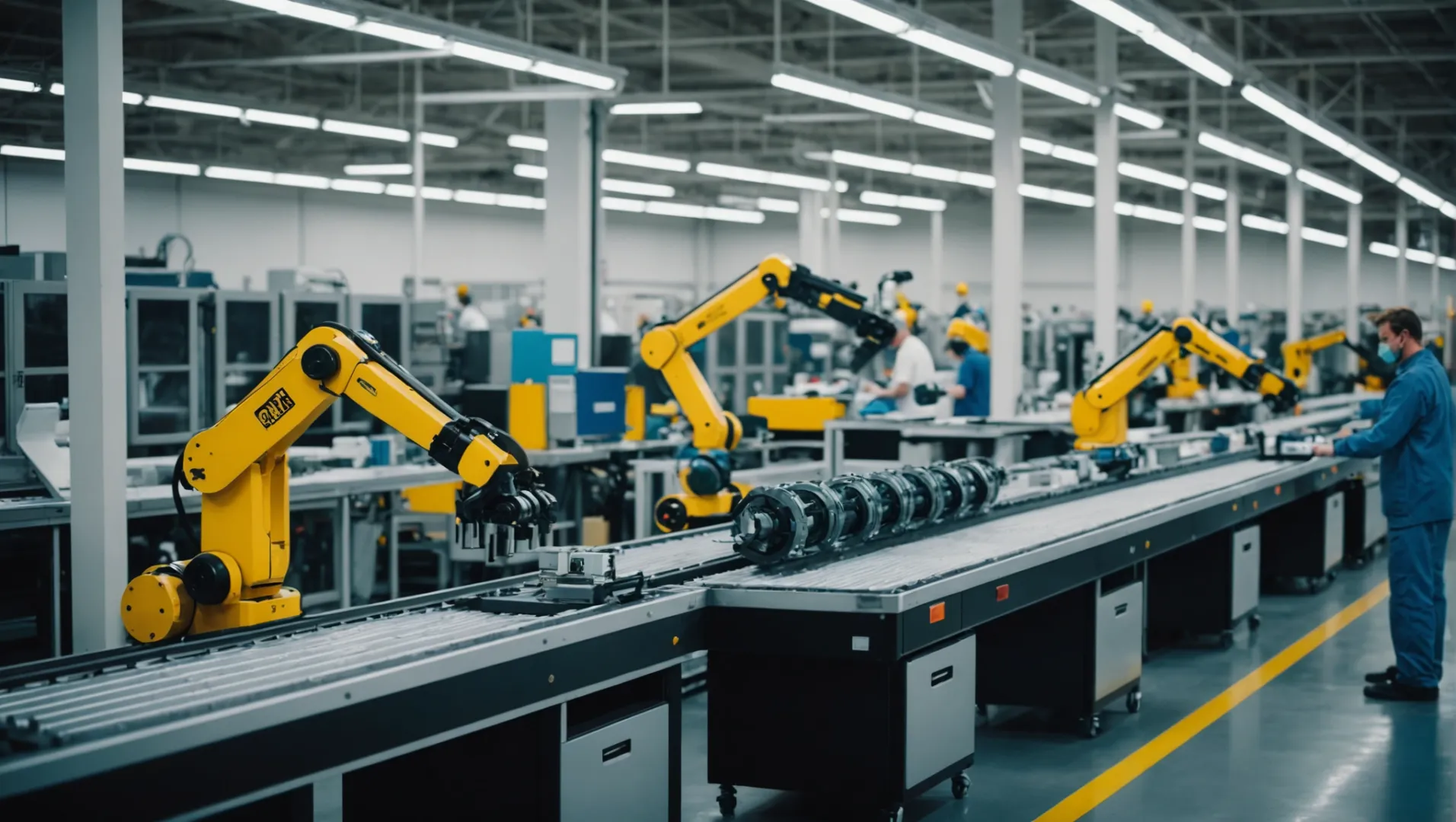
Auswirkungen der Handelspolitik auf die Produktion
Handelspolitische Maßnahmen, insbesondere Zölle, haben einen erheblichen Einfluss darauf, wo Produkte hergestellt werden. Mit steigende Zölle4 auf Einfuhren aus China könnten einige Unternehmen es für wirtschaftlich rentabel halten, Produktionsstätten in den USA zu errichten, was zu einer Steigerung der lokalen Produktion führen könnte.
Ein möglicher zukünftiger Trend besteht darin, dass chinesische Hersteller ihre Fabriken in die USA verlagern, um diese Zölle zu umgehen, wie von Experten vorgeschlagen. Diese Verlagerung könnte zu einer robusteren US-Fertigungsbasis für Luftreiniger führen, die eine wettbewerbsfähige Preisgestaltung und eine höhere Verfügbarkeit von Qualitätsprodukten ermöglicht.
Technologische Fortschritte in der Fertigung
Der technologische Fortschritt spielt eine entscheidende Rolle für die Effizienz der Produktion und die Produktqualität. Mit dem Aufkommen neuer Technologien könnten die US-Hersteller schnellere und kostengünstigere Produktionsmethoden einführen.
So kann beispielsweise die Integration von KI und Automatisierung Prozesse rationalisieren, Kosten senken und die Produktinnovation in US-amerikanischen Fabriken verbessern. Unternehmen, die sich diese Fortschritte zu eigen machen, können sich auf einem Markt, der sowohl Effizienz als auch hohe Leistung verlangt, abheben.
| Technologie | Nutzen Sie |
|---|---|
| KI-Integration | Rationalisierung der Produktionsprozesse |
| Automatisierung | Reduziert die Arbeitskosten |
| 3D-Druck | Beschleunigt das Prototyping und reduziert den Materialabfall |
Globale Produktionsverlagerungen
Globale Verschiebungen bei den Produktionspräferenzen deuten auch auf einen potenziellen Anstieg der Produktion in den USA hin. Mit dem zunehmenden Fokus auf Nachhaltigkeit reduziert die lokale Produktion den Kohlenstoff-Fußabdruck, der mit dem Transport über große Entfernungen verbunden ist.
Darüber hinaus verlagert sich die Vorliebe der Verbraucher allmählich auf Produkte aus lokaler Produktion, da diese als qualitätsgesichert wahrgenommen werden und der Wunsch besteht, die lokale Wirtschaft zu unterstützen. Diese Trends bieten einen fruchtbaren Boden für die Steigerung der einheimischen Produktion.
Schlussfolgerung
Während die derzeitige Produktion von Luftreinigern in den USA begrenzt bleibt, bieten diese zukünftigen Trends Wachstumschancen. Das Verständnis dieser Dynamik hilft den Akteuren, sich auf Veränderungen vorzubereiten, die die Branchenlandschaft umgestalten könnten.
Die US-Zölle auf chinesische Importe kurbeln die lokale Produktion an.Wahr
Zölle machen Importe kostspielig und ermutigen US-Unternehmen, vor Ort zu produzieren.
AI reduziert die Kosten in der US-Luftreinigerproduktion.Wahr
KI rationalisiert Prozesse, senkt die Arbeitskosten und steigert die Effizienz.
Schlussfolgerung
Die Möglichkeiten sind zwar begrenzt, aber wenn Sie sich über die Veränderungen in der Branche informieren, können Sie klügere Entscheidungen für Ihre Anforderungen an die Luftqualität in Innenräumen treffen.
-
Informieren Sie sich über Branchentrends und knüpfen Sie Kontakte zu potenziellen Herstellern: Wer nimmt teil >>> Die AHR Expo richtet sich an HVACR-Fachleute aus allen Bereichen der Branche, darunter: Ingenieure, Bauunternehmer, OEMs, Design/Build ... ↩
-
Entdecken Sie, wie die DFS-Technologie herkömmliche Filter übertrifft und für sauberere Luft sorgt: Der Ultrafine 468 ist mit unserer patentierten DFS-Technologie ausgestattet, die potenziell schädliche ultrafeine Partikel in Ihrem Raum auffängt und eliminiert. Unsere Produkte sind ... ↩
-
Entdecken Sie, wie Messen Ihre Geschäftsstrategien fördern können..: Jede Messe, die Sie besuchen, ist eine Chance, Ihr Geschäftsnetzwerk zu erweitern, neue Geschäftsbeziehungen zu knüpfen und bestehende zu stärken. ↩
-
Verstehen Sie, wie Zölle Entscheidungen in der Produktion weltweit beeinflussen: Quelle: Allgemeines Gleichgewichtsmodell der Steuerstiftung, Juni 2024. Wichtigste Erkenntnis. Die Trump-Administration hat Zölle im Wert von fast $80 Milliarden ... ↩


